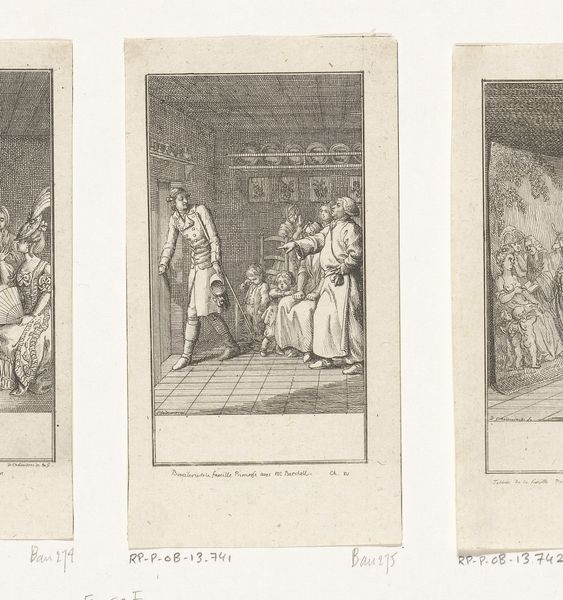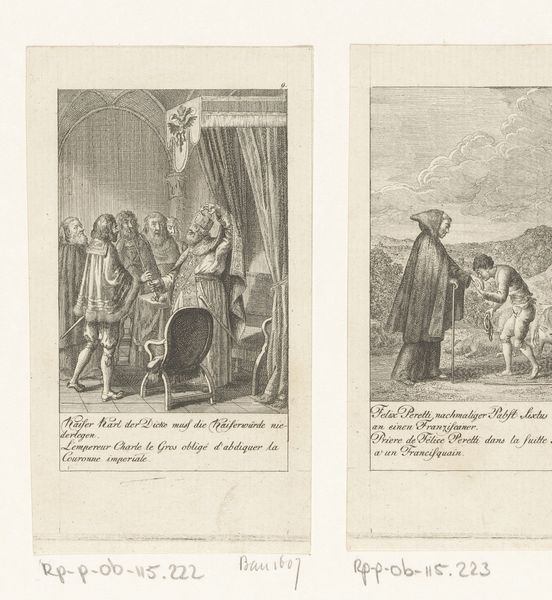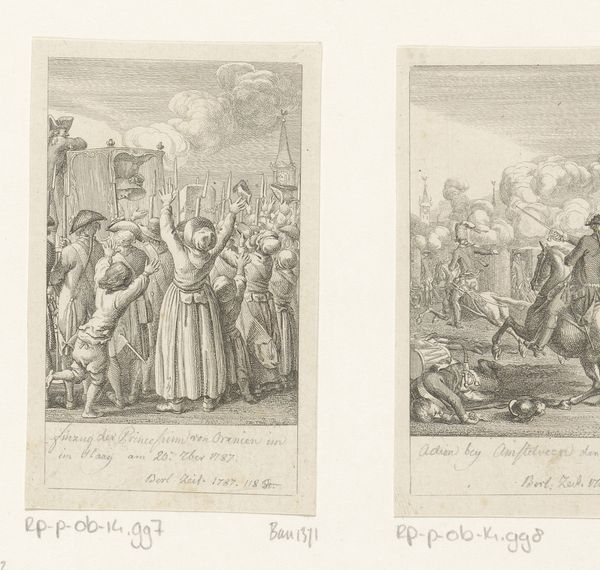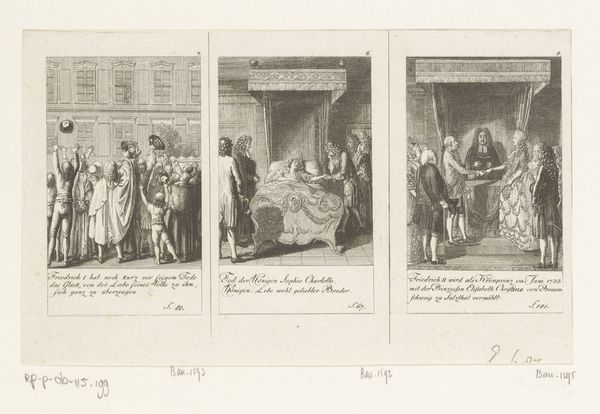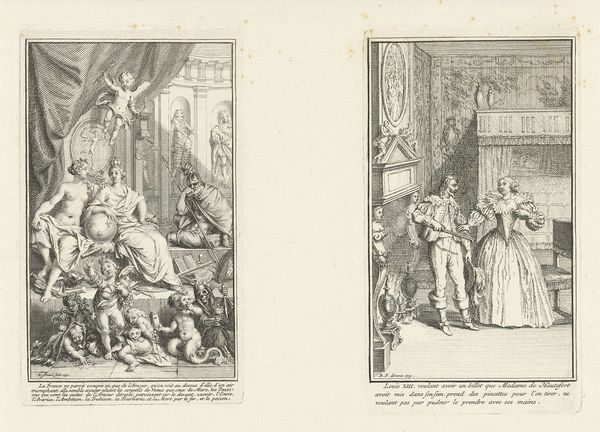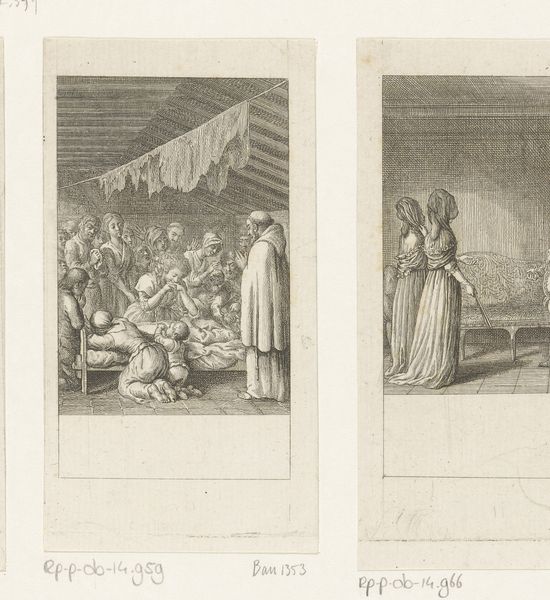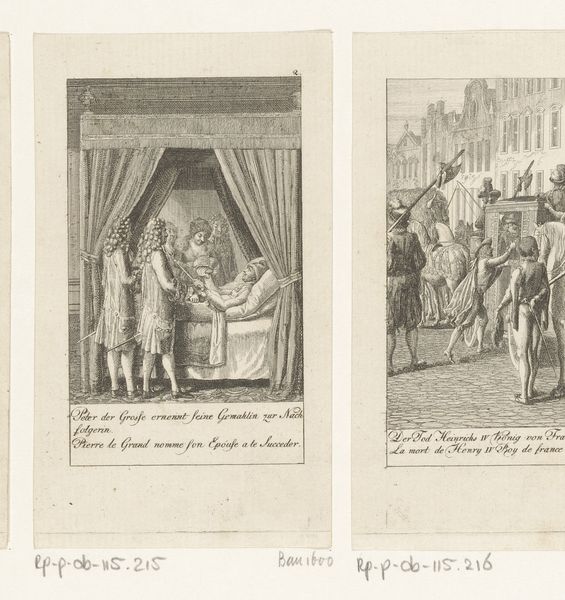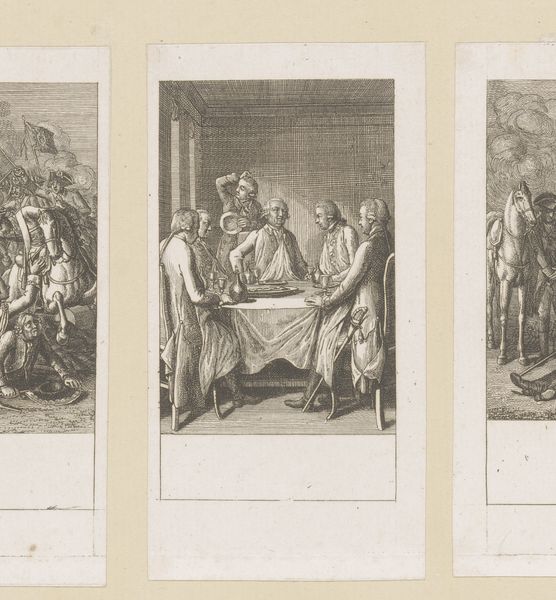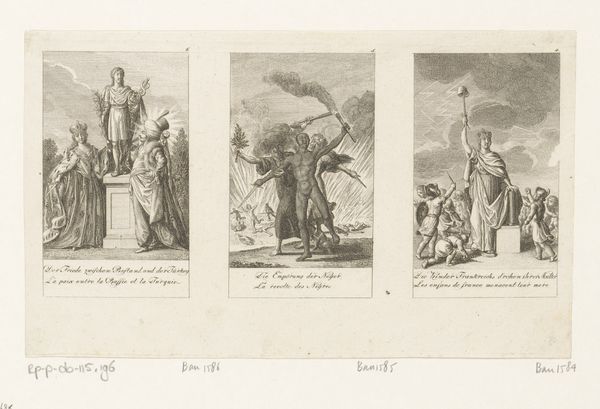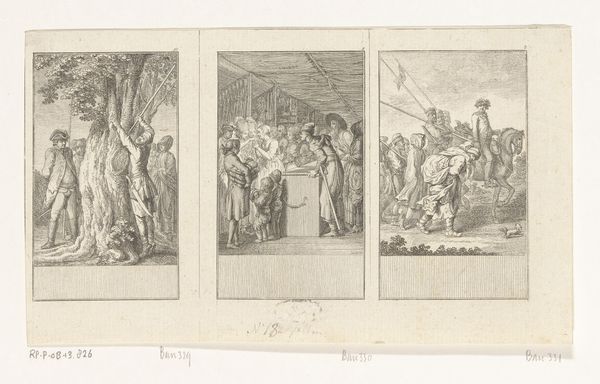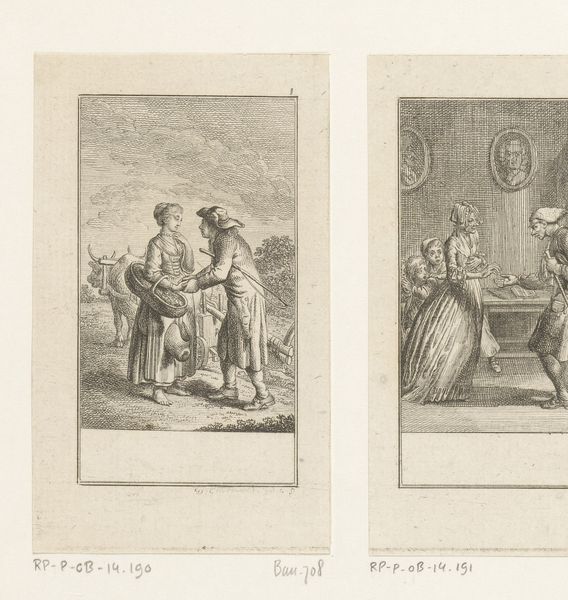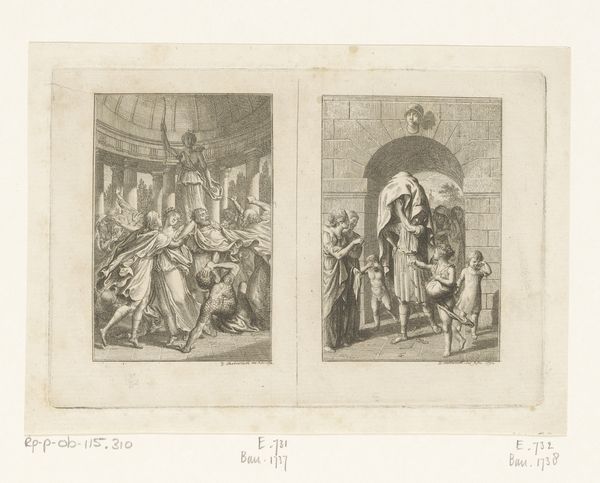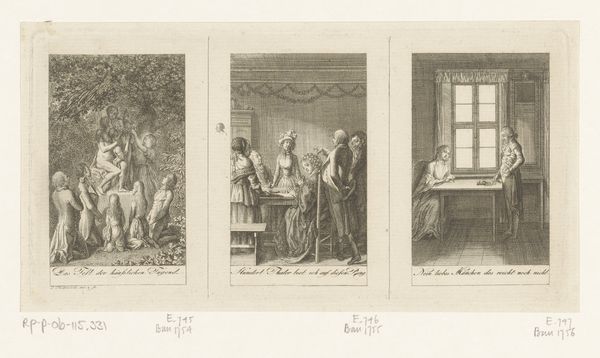
Drie voorstellingen uit de Brandenburgse geschiedenis 1792
0:00
0:00
danielnikolauschodowiecki
Rijksmuseum
Dimensions: height 109 mm, width 191 mm
Copyright: Rijks Museum: Open Domain
Editor: Here we have "Drie voorstellingen uit de Brandenburgse geschiedenis," or "Three Scenes from Brandenburg History," an engraving by Daniel Nikolaus Chodowiecki from 1792. I'm immediately struck by how dense the composition is – so many figures and details packed into these small panels. How do you interpret these scenes and their symbolism? Curator: Looking at these meticulously rendered scenes, I'm drawn to the repetition of power dynamics. Each panel, despite depicting different events, centers on a figurehead – someone negotiating peace, someone being crowned, someone being rescued. It makes me wonder about the psychological weight Chodowiecki wanted to convey with leadership and legacy in Brandenburg. Do you notice any specific symbols recurring in these images? Editor: I see the crown, obviously, but beyond that, I am having trouble decoding specific repeated symbolic elements, except the implied notion of heroic men of action. Curator: Yes, and consider the use of framing. The tent in the first panel, the architecture in the second, the chaotic battle in the third...they create distinct stages, almost like theatrical sets for the drama of history. How might those choices reflect contemporary understanding, or perhaps even manipulations, of the Brandenburg narrative? Editor: That's fascinating – framing the historical narrative so deliberately. The composition does guide the eye to those figures. Curator: Absolutely. Chodowiecki isn't simply illustrating events; he's shaping how they're remembered. Note the gaze of the central figure, who's writing something; this single act symbolizes negotiation with the other, constructing a foundational narrative that could also imply deception and power, considering who they are at the negotiation table. How might that subtle detail affect a viewer’s interpretation? Editor: It pushes me to question the accuracy, the biases embedded in even seemingly objective historical depictions, as a symbolic act by a central individual has so much power. I never considered engravings to have such a point of view! Curator: Precisely! Images speak volumes about cultural memory. These historical engravings allow us to dive into Brandenburg’s self-image at the time. Editor: I see the lasting importance of considering an image’s layered historical context when analyzing such works. Curator: It demonstrates how visual language can inform our perception of identity and leadership throughout history.
Comments
No comments
Be the first to comment and join the conversation on the ultimate creative platform.

